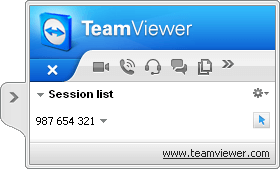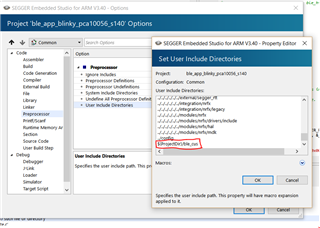
- #Segger embedded studio download error how to
- #Segger embedded studio download error install
- #Segger embedded studio download error drivers
- #Segger embedded studio download error full
- #Segger embedded studio download error code
#Segger embedded studio download error code
Execution stops at the entry function, so here we see the assembly code for that.
#Segger embedded studio download error drivers
Now, with your board plugged into the PC (and ST-LINK drivers installed), set the debug target to Launch and F5 will work using openocd acquired by vcpkg to flash and debug the attached board.

This project is configured to break on entry with the property stopAtConnect. The information for describing peripheral registers is provided by the MCU manufacturer in an SVD file that we point to with svdPath. You can see the miDebuggerPath set to use arm-none-eabi-gdb while the debugServerPath is set to invoke openocd with the configuration script in debugServerArgs. To see how the launch is controlled select view all files in the solution explorer and open. Note on hover that this function expands to TIM3->CCR1 which is a peripheral register on the board which we’ll inspect while we are debugging. Use Ctrl + T to open Go to All and type button, select the button_a_callback function to navigate to it. We will also cover new diagnostic capabilities around peripheral registers and RTOS object views. With this Azure RTOS project we’ll cover code navigation, IntelliSense, build, deploy, debugging. Visual Studio can run the CMake build using the preconfigured CMakePresets file with the compilers vcpkg acquired.Īll the editing power of Visual Studio is now available for use with the embedded project. Now that we have the project open in Visual Studio it is ready to go as any other CMake project.
#Segger embedded studio download error full
Note that if you have more than one version of Visual Studio installed this may not launch the current preview, in that case you will need to use the full path to your preview installation, for example C:\Program Files\Microsoft Visual Studio\2022\Preview\Common7\IDE\devenv So, at present we need to launch Visual Studio from the environment we activated at the command line so those tools are available for its use as well. Today vcpkg is not integrated in Visual Studio. In the previous section we used vcpkg to acquire the tools for our embedded project. Using Visual Studio for embedded development

So, in three commands we have cloned our embedded project, installed vcpkg, acquired and activated the necessary tools for building the project.
#Segger embedded studio download error install
Running the vcpkg activate command will use this file to determine if I have those tools, install them if I do not, then activate them in my environment for use.
#Segger embedded studio download error how to
See the vcpkg artifacts post for details on how to create your own manifest. This manifest file was created with vcpkg and has recorded the tools you need to build and debug this project. In the project folder, there is a file vcpkg_configuration.json. Navigate to the subfolder for the board you are using, here I’m using the Azure IoT DevKit. This sample will serve as our example project for the remainder of this post. In a future release this will be integrated into Visual Studio for a more seamless experience.įrom a PowerShell prompt, clone the Azure RTOS getting started repo. Today we’ll demonstrate using vcpkg from a PowerShell prompt to activate our embedded development environment. This is where the new artifact capabilities in vcpkg can help us. It is not uncommon to have different compilers used for different projects, custom debug tools, etc. One of the challenges in embedded development is getting the tools necessary installed and configured. The components you need are selected by default. To get started install the latest preview release of Visual Studio 2022 and select the Linux and embedded development with C++ workload. The techniques used for interacting with these boards should be applicable to other targets by changing configuration information. We have dedicated pages for Visual Studio usage in the getting started guides for the Azure IoT DevKit, NXP 1060, and STMicro STM32L4_L4+ boards. We will demonstrate all of this with an Azure RTOS ThreadX project.Īzure RTOS ThreadX is a widely used Real Time Operating System (RTOS) used on billions of microcontrollers (MCUs) in products around the world. In this post we will walk you through Visual Studio installation of the embedded workload, how to acquire embedded tool dependencies with vcpkg, then demonstrate edit, build, deploy, and debugging directly in Visual Studio with new peripheral register and RTOS object views. Used in conjunction with the new vcpkg artifact capabilities you can quickly bootstrap an embedded development machine and get started. We are happy to announce that we have added new embedded development capabilities to Visual Studio 2022 Preview.


 0 kommentar(er)
0 kommentar(er)
